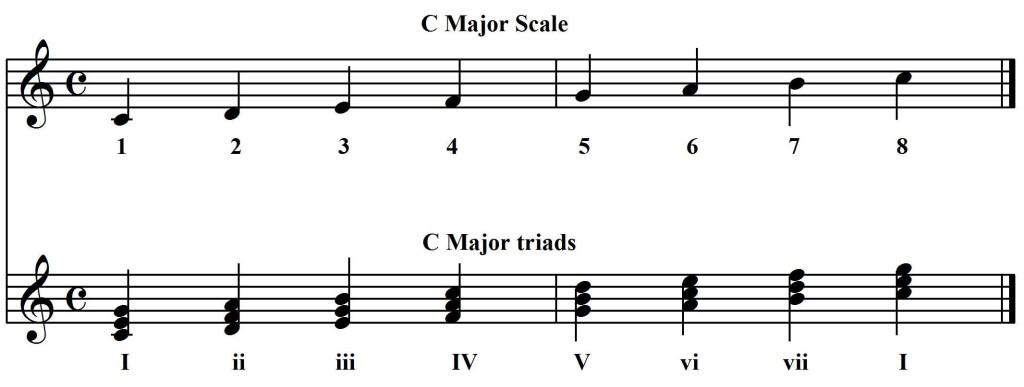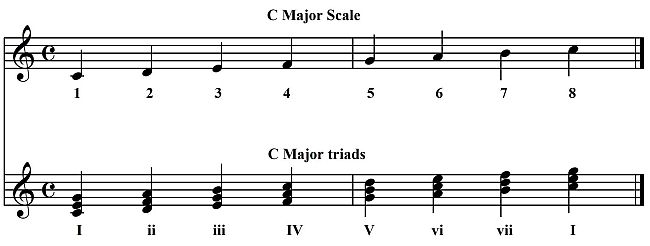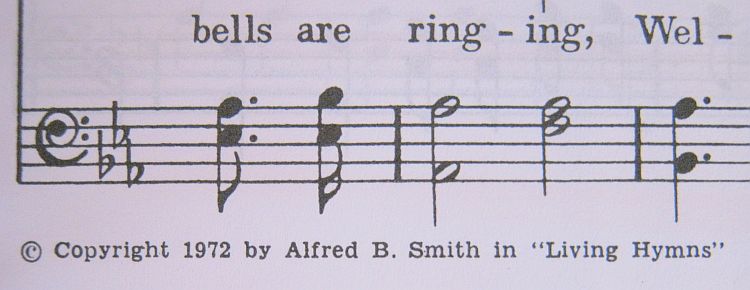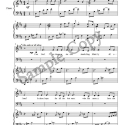October 30th, 2013
Sorry for not posting last week. We had to leave unexpectedly out of town for our daughter-in-law who had a miscarriage with a couple complications as well.
We have witnessed God’s amazing grace through it all. I should be back to a normal schedule this coming week.
Posted in Uncategorized | 4 Comments »
October 14th, 2013
I’m very excited about publishing “When I Looked Up to the Cross”, sacred vocal solo by my dad, Reece Yandle.
This is our family favorite. My youngest son had this song sung at his senior graduation.
You will enjoy this uplifting melody with a salvation emphasis! The video below was recorded before the written arrangement and differs slightly… but will give the listener the writer’s intended interpretation of the song….especially since the writer himself is singing in this video 🙂 Thanks dad for allowing God to use you through this song!
Tags: reece yandle, sacred vocal solo, vocal solo, when i looked up to the cross
Posted in Special Music, Vocal | No Comments »
October 14th, 2013
Time to apply what was taught in lessons one through four on “How to Add Chord Substitutions”.
The following visual aid of the C Major scale and its chords will be helpful for this lesson!

Notice once again: The Major chords above are indicated by an upper case Roman numeral. The lower case Roman numeral indicates a minor chord.
Now for the fun part!…You’re about to learn how to find chord substitutions!
The bottom line: The three major chords listed above in the key of C: I, IV and V can be substituted with a minor chord. How do do this?
Look for a minor chord that has at least two notes in common with a major chord. For example: A iii chord (EGB) has two notes in common with the I chord (CEG). That means….a iii chord can replace a I chord in the right setting.
Ok….can you find the other minor chord that has two notes in common with the C (I) chord? Yes! the vi (ACE)
Your Quiz:
1. Find the two minor chords that have two notes in common with the IV chord.
2. How about the two minor chords that are compatible with the V chord?
~~~~~~~~~~~~~~~~~~~~~~~~~~~~~~~~~~~~~~~~~~~~~~~~~~~~~~~~~~~~
So…when to use the chord substitutions? When a major chord lasts for two or more beats…there is time to use a minor chord substitution! The melody note also dictates which substituted chord will sound right. (Hint: The left hand plays the chord substitution and the right hand may have to alter the alto note to match the substituted chord. (When playing from the hymnal)
*Special note: (Observation from one of my readers)…Just go up or down two chords from a Major chord to find its minor chord substitutions. (Thanks Victoria!)
I will provide visual examples in the next article!
Tags: chord substitutions, Chords, major chord, minor chord
Posted in Chord Substitutions, Chords | 6 Comments »
September 29th, 2013

Just wanted to explain my temporary absence…recovering from surgery.
Not able to sit for more than few minutes at computer. That will change in time 🙂
The doctor gave me a four to six week recovery.
The surgery was successful with several setbacks during recovery but now on the mend 🙂
Thanks SO much for your prayers! I can’t wait to start writing again!
“Simply trusting every day…trusting Jesus that is all.”
Posted in Uncategorized | 4 Comments »
September 20th, 2013
I’m excited to offer to you a wonderful mission/revival song from the heart of Lynndale Hardeman.
Lynndale has written other songs as well that we plan to publish in the future.
I believe this is our church’s favorite choir piece! The soul-stirring message of this SAB choir special will bless all who hear and sing it!
“…can God redeem a sinner…yes He can!”
“…can God revive a Christan…yes He can!”
“…can God restore a nation…yes He can!”
Trio or SAB sacred choir arrangement, 9 pgs. *Price covers 10 or more copies
See video link below to hear our choir sing this arrangement.
The written piano score is similar to the video. I played the arrangement by ear on the video.
Price: $8.00
Tags: God Can, lynndale hardeman, sab choir arrangement
Posted in Choir, Vocal | 1 Comment »
September 10th, 2013
Just want to apologize to my readers for getting the major & minor chord descriptions backwards. At least I was consistent! 🙂
No….seriously, I just shouldn’t have been working on it so late at night. To ease your minds….I do know the following:
4 half steps = Major 3rd
3 half steps = minor 3rd
Thanks to a reader that brought the mistake to my attention 🙂 I do appreciate that. Now everyone can read the correct information in the following lesson:
“How to Add Chord Substitutions: Lesson 4”
I just want everyone squared away and ready for the grand finale lesson in this series of “How to Add Chord Substitutions”
*Please keep us in your prayers as my husband will be having surgery this month as well as myself, plus a grandson being born…all within one week of each other.
My posting may be less frequent during my recovery time but am trying to build up a few articles that will post automatically during my recovery time.
I thoroughly enjoy writing music and sharing ideas with you all! God has truly blessed me with some wonderful readers!
Posted in Uncategorized | No Comments »
September 7th, 2013
Answers to Lesson Three’s Assignment on Major and minor 3rds:
D flat to F (Major 3rd)
C to E flat (minor 3rd)
G# to B (minor 3rd)
B to D# (Major 3rd)
Now that you’ve learned Major and minor 3rds…you’re ready to apply this knowledge to the scale-based triads of any Major scale.
For ease of application, I’ll use the scale-based triads of the C Major scale listed below.

Notice that the triads either have an upper case or lower case roman numeral. Upper case indicates Major chord and lower case means minor chord. All Major scales have the same chord numbers.
For example, in G Major (which has one sharp)…the I chord would still be a Major chord and the ii chord would be minor, etc.
Now for applying your knowledge of major and minor 3rds…
1. A Major chord consists of a Major 3rd plus a minor 3rd. For example: the 1st chord in the C scale (I) is a C chord (CEG). From C to E is 4 half steps and from E to G is 3 half steps.
Remember: a minor 3rd consists of 3 half steps and a Major 3rd consists of 4 half steps.
So…from C to E is a Major 3rd and E to G is a minor 3rd. A Major 3rd plus a minor 3rd = a Major chord!
2. The minor chord ingredients are just the opposite of a Major chord….a minor 3rd plus a Major 3rd = a minor chord!
(See Lesson Three for more details)
With the knowledge learned in lessons one through four….you will be able to learn some VERY EASY chord substitutions! Can’t wait for the next lesson! The fun will begin 🙂 Review lessons one through four so you’ll be ready! See links below for each lesson:
Lesson One
Lesson Two
Lesson Three
Tags: chord substitution, chord substitutions, major chord, minor chord
Posted in Chords, Theory | 4 Comments »
September 5th, 2013
You’ve probably seen a comment on my site somewhere along the way that read something like this… “Sorry I can’t create an arrangement of (whatever hymn title) because it’s still under copyright law.”
How to know if a hymn is still under copyright? Open a hymnal to any hymn and look at the bottom of the page. You will be looking for the symbol © or the word “copyright” with a year.

Copyrighted hymns fall into two categories: Hymns written before 1978 and Hymns written after 1978. I’ll cover the first category of copyrighted hymns in this article.
A. Copyrighted hymns written before January 1, 1978
To make a long story short…Copyrighted hymns published before 1978 are “automatically protected from the moment of its creation for the author’s life plus an additional 70 years after the author’s death.”
http://www.copyright.gov/
So…what’s so important about knowing this information? Misuse of someone’s copyrighted song without their permission (such as: making photocopies, creating a recording of the song for profit or non-profit use) is a form of stealing and therefore a federal offense.
Disclaimer: The information shared in this article is not intended as legal advice; but rather to enlighten the reader.
Click here for more information
Tags: copyright, copyrighted hymns
Posted in Important Information | No Comments »
August 23rd, 2013
How do I know if a hymn is copyrighted? Can I make a CD of copyrighted music IF I’m giving it away for free?
How can I tell if a hymn is public domain? Or…what does “public domain” mean?
Surely a hymn written over 90 years ago is not copyrighted!
I’ll be sharing several articles on this topic of Copyrighted Hymns. Did you know that a copyrighted song written before January 1, 1978 can have a total lifespan of 95 years under copyright protection?
A very detailed topic to cover! I will try to deliver the information as clear as possible in short segments.
Disclaimer: The information covered in this article is not intended as legal advice.
Tags: copyright, copyrighted hymns
Posted in Important Information | No Comments »
August 20th, 2013

Just so you know…I’m feverishly working on a huge project that I want to finish as SOON as possible!
Here’s what I’m working on…
1. Finishing up “God Can” SAB choir arrangement
2. Congregational Hymnal for Church Pianists (HUGE project!)
I’m very excited about both of these projects but it takes turning off the world around me and staying in my gopher hole until I complete them!
Posted in Uncategorized | 6 Comments »





